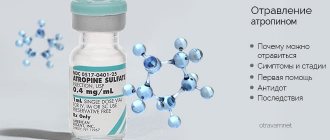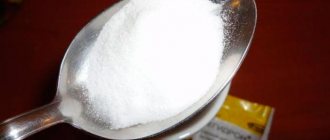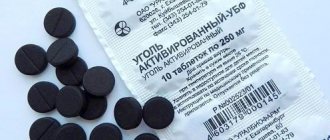Manganese is one of the key elements involved in the functioning and development of human organs and systems, however, with a large intake into the body, its effect becomes neurotoxic . Manganese poisoning most often occurs among workers in hazardous industries. It occurs quite slowly, but if detected late, it leads to irreversible damage.
Causes of poisoning
It is quite difficult to poison yourself with potassium permanganate, since this remedy itself is often used for intoxication of the body. This substance is mixed with water and given to the poisoned person to induce vomiting. In small quantities, potassium permanganate is not dangerous, but an overdose can cause intoxication.
There are several ways of poisoning with potassium permanganate:
- Violation of safety regulations in the production of potassium permanganate. In this case, several people can be poisoned at once. To avoid such cases, you need to adhere to safety precautions and treat chemicals with great care.
- Manganese, which is part of the drug, can accumulate in the human body. Therefore, if it is necessary to systematically work with this substance, you must undergo a medical examination. It is also important to take frequent breaks in your work.
- The substance may enter the body accidentally through food or liquid. In this case, serious intoxication is possible.
The substance is especially dangerous for children. A child's body is more susceptible to various types of irritants. If symptoms of intoxication appear, you should definitely consult a doctor who will select adequate treatment.
Properties and applications of manganese
Manganese does not exist in nature in its pure form. It is found in the form of a compound with various metals. This element easily reacts with oxygen, is insoluble in water and readily dissolves in acids.
Manganese is most widely used in industry. It is used to produce steel with increased strength, which is later used in the production of armor and railway rails. Manganese is no less in demand in the process of electric welding and in the production of various electrical elements.
Symptoms of poisoning
As a result of the cauterizing effect of potassium permanganate on the mucous membranes, there is a risk of severe dyspepsia. Laryngeal edema may also occur, leading to mechanical asphyxia.
When the substance is absorbed through the mucous membranes, a toxic effect on the functioning of the central nervous system is possible. The liver, kidneys, and uterus may also be damaged. The respiratory properties of blood often change. In this state, hemoglobin is transformed into methemoglobin.
Symptoms of acute poisoning
If potassium permanganate gets inside, acute intoxication occurs. It is characterized by the following symptoms:
- dark brown color and swelling of the mucous membranes of the oral cavity and pharynx;
- severe burning sensation in the mouth;
- severe pain in the abdomen and behind the sternum.
There is also a risk of pinpoint burns from potassium permanganate crystals. They are localized on the skin of the neck, chest and face.
This condition is often accompanied by cough, nausea and vomiting. A person may experience bloody diarrhea. As intoxication progresses, symptoms of hemorrhagic colitis are observed.
Swelling of the mucous membranes provokes asphyxia, which is accompanied by suffocation and cyanosis. After absorption of the substance, motor agitation and shaking paralysis appear. Methemoglobinemia is characterized by the appearance of cyanosis and compensatory shortness of breath. For adults, the lethal dose of the substance when taken orally is 0.3–0.5 g per 1 kg of weight.
As poisoning progresses, there is a risk of burn shock, convulsions, and bronchopneumonia. Kidney and liver failure, collaptoid reaction, and hemorrhagic colitis often develop.
Symptoms of vapor poisoning
When a large amount of vapor of a substance enters a person’s lungs and blood, it quickly spreads throughout the body, negatively affecting the main organs and systems.
Is it possible to water indoor flowers with potassium permanganate?
In different concentrations, a solution of potassium permanganate brings considerable benefits to plants. But what flowers can be watered with potassium permanganate? How often can I spray and water? Let's figure it out.
The frequency of watering indoor plants with manganese is determined by two factors. First, as already mentioned, potassium permanganate is a source of potassium and manganese. They are important and provide certain benefits to plants. But in large quantities they can have a negative effect on the development of the plant organism.
Secondly, when regularly watering indoor flowers with a KMnO4 solution, acidification of the soil occurs. Not all houseplants need and can withstand low pH values. That is why you should follow the watering and spraying regime.
How often can you water flowers with manganese?
If this procedure is needed for preventive purposes, then once every six months is enough. If the use of potassium permanganate for plants is due to some problem, then it is recommended to water indoor flowers more often - up to once a week.
More frequent watering can lead to undesirable consequences. Therefore, it is necessary to use other means in parallel to solve the problem. At home, ash, laundry soap, iodine, and tobacco can help out. In case of urgent need, it won’t hurt to buy professional products.
What flowers can be watered with potassium permanganate?
Despite the fact that the use of potassium permanganate is beneficial for plants, not everyone can withstand its effects. The list of suitable decorative foliage and beautifully flowering plants includes those who love acidic soils. First of all, these are tropical crops:
- Begonias
- Ferns
- Tradescantia
- Cyperus
- Monstera
- Ivy
- Diefenbachia
- Gardenia
- Chlorophytum
- Zygocactus
- Paunsetia
Other indoor plants that respond well to potassium permanganate:
- Pomegranate
- Violets
- Amaryllis
- Lemon
- Orange
- Mandarin
When growing indoor varieties and seedlings of garden crops at home, you can also use a pink solution to:
- Pertsev
- Tomatov
- Kabachkov
- Ogurtsov
Sometimes flower growers wonder whether it is possible to water an orchid with potassium permanganate. Professionals say that you can not only water the soil with it, but you can also treat the root system. Read more about growing orchids after purchase. Let me just say briefly that potassium permanganate is suitable for orchids and violets as a disinfectant and nourishing agent.
Especially for orchid lovers, there are two books in electronic format, which contain all the necessary information on growing these plants. The first book is called “Home First Aid Kit for Orchids”. It was written by a professional in his field, but in a very simple and understandable language. In addition, the book contains many illustrations.
The second book, “Secrets of Orchid Care,” contains extensive material based on personal experience, provides numerous recommendations, and reveals secrets that few people know about. The authors of both books guarantee their readers support and answers to all questions about caring for these delicate flowers.
First aid for poisoning
If potassium permanganate enters the body, the poisoned person must be given first aid in a timely manner. This will help speed up recovery and minimize the likelihood of negative consequences.
If signs of intoxication appear, it is recommended to take the following actions:
- Rinse the stomach. To do this, the victim must be given a lot of water to drink, and then vomited. A solution of potassium permanganate cannot be used in this case, as this will cause an increase in the concentration of the substance in the blood and cause even greater harm to health. Lavage is performed until clear liquid begins to emerge from the stomach.
- Take a weak solution of ascorbic acid. It is recommended to give this substance to the victim in large quantities. It will help get rid of the negative consequences of poisoning.
- Clean the oral cavity from any remaining substances. To do this, you should use a sterile napkin or cotton pad. This will help prevent inflammation and swelling.
- Provide fresh air flow. The patient should also be put to bed and given sweet tea to drink.
Other therapeutic measures should be provided by a specialist. It is strictly forbidden to self-medicate, since a weakened body may suffer. In some cases, it is necessary to conduct a course of therapy in a hospital setting.
How to treat wounds
with a weak, one percent
solution
of potassium permanganate before applying a bandage with antimicrobial ointments.
Photo 2. To treat wounds, you need to dilute a weak solution.
Source: Flickr (Bates College Photography) More concentrated
(from 2 to 5%) you can lubricate the damage to disinfect the wound or burn surface.
Note! The potassium permanganate solution has antiseptic properties only until it dries. Therefore, in case of suppuration, it is necessary to additionally use antibiotic ointments after rinsing.
How to dilute potassium permanganate
If it is not possible to use accurate scales for diluting potassium permanganate, then use
need
according to the color of the solution
. A concentration of 1% corresponds to a pale pink color, a slightly more saturated shade is obtained at 5%. The powder should be diluted as follows:
- Prepare a glass container
. The vessel in which the solution is prepared should be transparent - this makes it easier to assess the color of the liquid and control the dissolution of the crystals. - Warm up the water
a little . Potassium permanganate dissolves faster in it, and using a warm solution for rinsing is more comfortable. - After pouring water into a container, add
permanganate
there (at the tip of a knife). A few grains are enough for a liter jar. - Stir
thoroughly until the crystals completely disappear; if necessary, strain through several layers of gauze. - For each procedure, prepare a fresh portion. The solution cannot be stored, as it loses its antiseptic properties.
It is important! When potassium permanganate crystals come into contact with wet skin, they cause a deep chemical burn. Therefore, you cannot take the powder with your hands, and the solution should be filtered after preparation.
Processing rules
Pale pink solution
Designed
for washing
and deodorizing festering burns and wounds.
After dilution, you need to pour it into a wide, shallow container and lower the damaged part of the body there for a couple of minutes. If it is impossible to wash the injury in this way, then the wound should be carefully wiped several times with gauze generously soaked in potassium permanganate.
For lubrication
a solution of a more saturated shade
is used . It is used to treat wet burn and wound surfaces, as well as bedsores. Thanks to the tanning effect, wounds dry out and reduce the risk of infection by bacteria.
Lubricate the damaged surface carefully using a cotton or gauze swab dipped in liquid.
If the solution is used as a prophylactic agent to prevent infection, then after washing, a sterile bandage is applied.
Purulent wounds are additionally treated with bactericidal or antiseptic ointment (Vishnevsky, Syntomycin).
The procedure should be carried out at least 2 times a day.
If a child is poisoned
If intoxication occurs in children, you should immediately call an ambulance. Parents are advised to remove potassium permanganate crystals from the skin and mucous membranes. To do this, wash the affected areas with running water and rinse your mouth.
The antidote to this substance is ascorbic acid. For medicinal purposes, the oral cavity is treated with a 1% solution of this product. The antidote should be mixed with water to obtain the required concentration. You can also treat the oral cavity with the following mixture: 2 liters of water, 100 g of 3% hydrogen peroxide and 200 g of 3% acetic acid.
Comments
“Network publication “Woman’sDay.ru (Woman’sDey.ru)” Certificate of registration of mass media EL No. FS77-67790, issued by the Federal Service for Supervision of Communications, Information Technologies and Mass Communications (Roskomnadzor) December 13, 2020 16+.
Founder: limited liability company "Hirst Shkulev Publishing"
Editor-in-Chief: Dudina Victoria Zhorzhevna
Copyright (c) Hirst Shkulev Publishing LLC, 2020.
Any reproduction of site materials without the permission of the editors is prohibited.
Contact information for government agencies (including Roskomnadzor):
Treatment for poisoning
Getting rid of the consequences of intoxication of the body should be under the supervision of the attending physician. To bind absorbed manganese, use thetacine-calcium in a 5% glucose solution or isotonic sodium chloride solution. Intravenous administration of this substance can be repeated 2 times with an interval of at least 3 hours. In case of severe intoxication, exchange blood transfusions are performed.
To reduce irritation and swelling, inhalation with a 2% sodium bicarbonate solution is indicated. It is used in aerosol form. The victim should also be given milk or a mucous decoction to drink.
For pain relief, Omnopon, promedol or morphine hydrochloride are injected under the skin. Calcium gluconate or calcium chloride is indicated to prevent bleeding. If swelling of the larynx develops, artificial ventilation and tracheotomy are indicated.
When shock develops, blood and plasma transfusions are given. Hydrocortisone acetate is also administered and vasoconstrictors are used. To prevent acute kidney failure, bilateral perinephric novocaine blockade is indicated. If convulsions occur, short-acting barbiturates are used. These include Hexenal and sodium thiopental.
In case of intoxication of the body, intensive vitamin therapy is indicated. To cope with methemoglobinemia, a solution of methylene blue and ascorbic acid is administered intravenously. Partial blood replacement and antibiotic therapy are also indicated.
Analogues of the solution
You can replace potassium permanganate for wound treatment with other pharmaceutical drugs with antibacterial properties:
- Hydrogen peroxide - after treatment, an antiseptic effect occurs.
- Prontosan is a sterile solution for washing, eliminates necrotic masses, microorganisms and their metabolic products.
- Iodine - a brown five percent alcohol solution is used to treat minor injuries and partially sanitation of deep wounds.
- Brilliant green is an antiseptic medicine for disinfecting fresh lesions.
- Furacilin - tablets or an aqueous solution are used to treat purulent wounds, bedsores, burns and minor damage to the skin.
Means for disinfection and prevention of suppuration for abrasions, scratches, cracks, and cuts can be purchased at the pharmacy, but there is no need to self-medicate. Extensive wounds must be treated by a doctor.
The article has been verified by the editors
Consequences after poisoning
If the substance is ingested in dry form, severe burns may occur, which have unpredictable consequences. This can happen through negligence or for the purpose of suicide.
Severe poisoning can cause constant shortness of breath, kidney failure, impaired hand motor skills, and hepatitis. During pregnancy, intoxication with this substance often provokes miscarriage.
Have you ever been poisoned with potassium permanganate?
Use of the drug
A weak solution of manganese is used to provide timely assistance in case of severe intoxication of the body. You can use a low concentration of the drug:
- When do the first symptoms of poisoning appear? The person begins to vomit and feel sick;
- Manifestations of intoxication from low-quality alcoholic products are visible;
- Signs of intoxication with hydrocyanic acid, phosphorus and the alkaloid quinine are noticeable;
We recommend reading: Potato juice for pancreatitis: can it be treated, benefits and harms
After identifying the source of poisoning, experts recommend doing gastric lavage with a weak solution of manganese. The substance can be used to cleanse the intestinal walls of microorganisms and toxins using an enema.
Potassium permanganate can be used for children only with the permission of the attending physician.
Prevention of poisoning
To prevent poisoning, it is recommended to perform the following actions:
- use protective equipment at work;
- undergo systematic medical examinations;
- do not eat foods that have been near chemicals;
- Do not store potassium permanganate with food;
- keep the product out of reach of children.
Getting a large amount of potassium permanganate into the body can cause dangerous consequences. To avoid complications, it is important to provide first aid to the victim and consult a doctor.
Seed dressing
Etching
Pickling of onion sets, zucchini and pumpkin seeds is carried out in a strong solution of potassium permanganate. Prepare a 1% solution (read how to make it below) and place the seeds in it. Dressing lasts 20 minutes, after which the seeds are washed in clean water. A weak solution is not suitable, because dressing will be ineffective, no matter how long the seeds lie in it.
Main goal of therapy
Therapy includes several main stages. During the treatment process, the doctor prescribes special medications, which first of all should:
- Remove poisons from the body.
- Remove waste and toxins.
- Fill the body with the necessary antidotes.
- Improve the functioning of important body systems.
- Eliminate the symptom of lack of air.
- Normalize blood pressure.
- Eliminate headaches and migraines.
During poisoning, the body experiences severe stress. This has a bad effect on your overall health and the condition of other organs. During the treatment process, it is necessary to examine all the patient’s organs and monitor their functioning; this is the whole difficulty of treatment. The doctor must conduct infusion and symptomatic diagnostics. If there are other organ diseases, then the doctor does not use even a minimal dose of potassium permanganate for gastric lavage in case of poisoning of any nature, as this may lead to complications.











